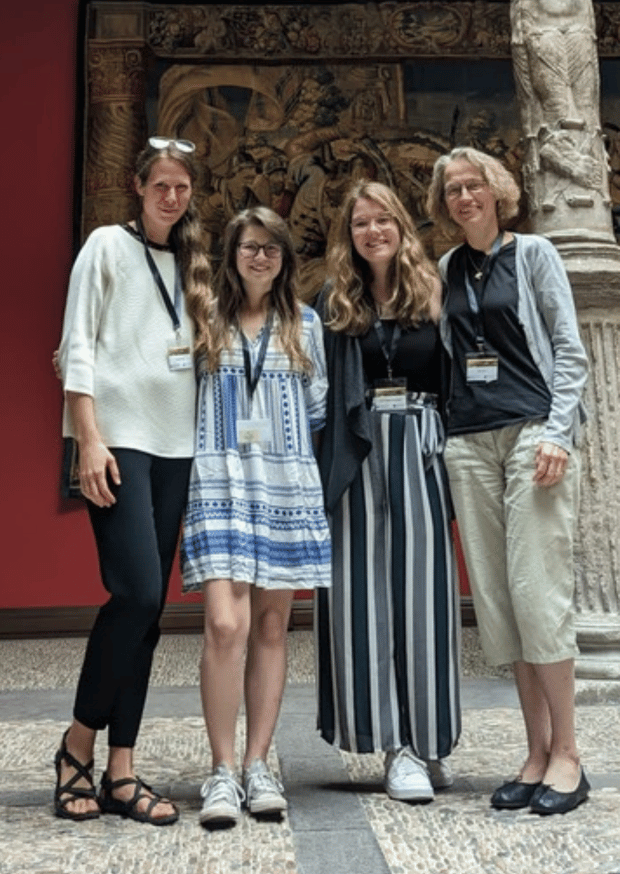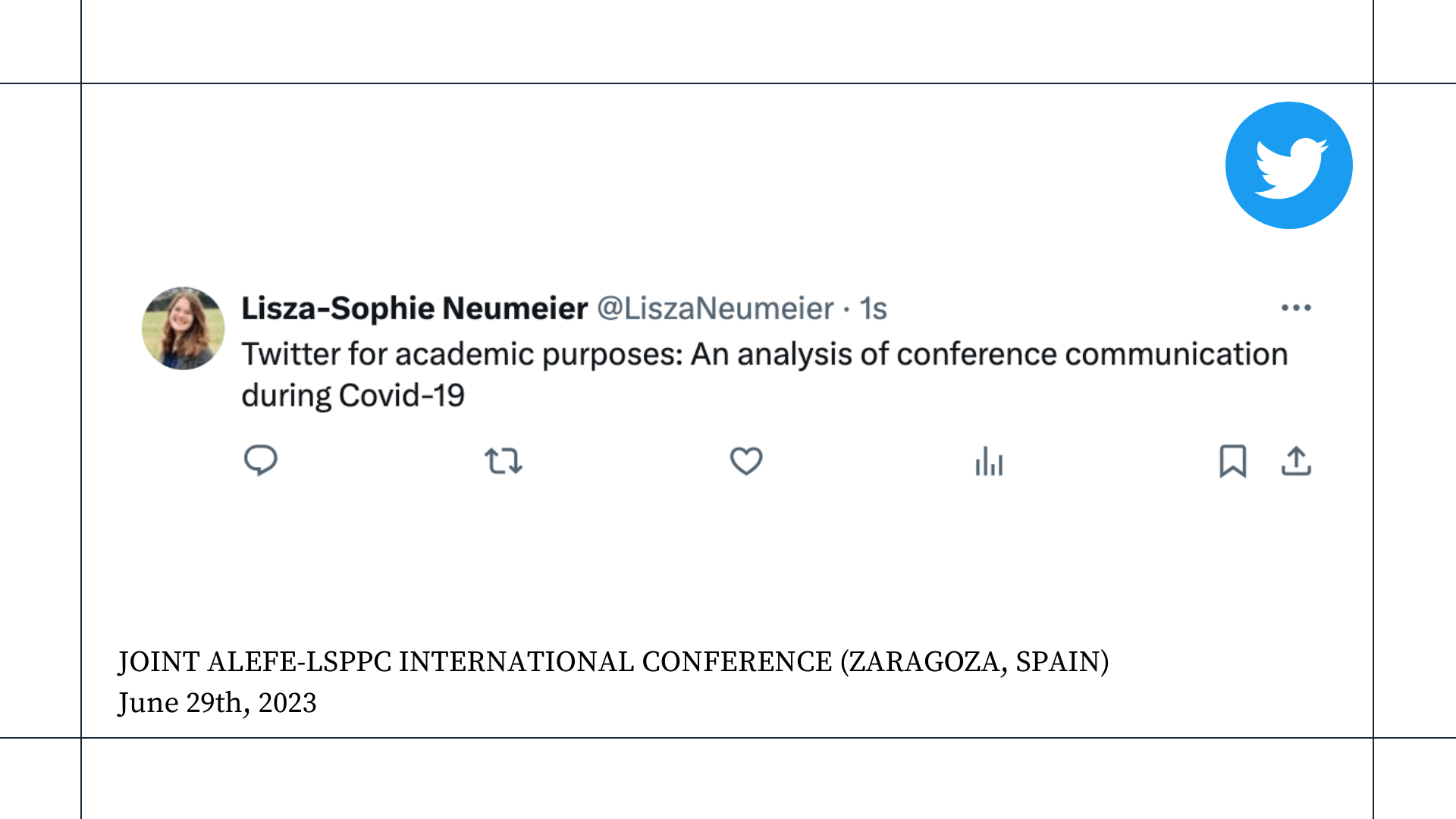Twitter for academic purposes: An analysis of conference communication during Covid-19

Verena Grau, Sophia Kaltenecker, Lisza-Sophie Neumeier & Ute Smit at the AELFE-LSPPC Conference in Zaragoza (2023)

Presentation by Lisza-Sophie Neumeier at the AELFE-LSPPC International Conference, June 28-30, 2023 in Zaragoza, Spain
Abstract:
Twitter is not only used among academic communities of various disciplines to post about individual academic achievements but also to exchange knowledge or network at conferences (Lee et al., 2017). In fact, a body of literature on the multimodal genre of conference tweets shows that Twitter constitutes a crucial tool for scholarly communication at academic conferences (e.g., Luzón & Albero-Posac, 2020; Mazarakis & Peters, 2015). Especially since, due to the Covid-19 pandemic, most conferences had to be moved to an online setting, social media functioned as an alternative channel for real-life conference communication. However, the professional use of Twitter at online conferences remained mostly unaddressed.
Therefore, a data set consisting of all tweets posted shortly before, during, and after a social anthropology online conference in 2021 was used to conduct a genre analysis. Multimodal content analysis (Ledin & Machin, 2020; Kuckartz, 2018) based on the classification of communicative functions of conference tweets by Luzón and Albero-Posac (2020) was employed to generate information about the communicative functions of the genre. Additionally, computer-automated corpus-based sentiment analysis (Baccianella et al., 2010) was applied to the data set in MAXQDA 2022 to investigate the sentiments of the conference tweets.
The findings showed that academics used Twitter for numerous communicative functions, which were primarily assigned to organizational, self-promotional, and networking-related aspects. Posting content-related tweets was a rather uncommon practice. Tweets concerned with networking and self-promotion were more likely to include multimodal content. Furthermore, as expected, most tweets expressed a positive sentiment. These results indicate that conference tweets form a valuable genre for academics and should be considered in EAP syllabi. Also, the promotion of conference hashtags constitutes an effective strategy to enable a digital backchannel.
Keywords: digital genre, conference Twitter, multimodal online communication, EAP
- Neumeier, L. (2024). "Twitter for academic purposes: An analysis of scholarly communication through conference tweets". In Reichl S. & Smit U. (eds.). #YouthMediaLife & Friends: Interdisciplinary research into young people's mediatised lifeworlds. Göttingen: Vienna University Press / Vandenhoeck & Ruprecht, pp. 69-102.
References:
Baccianella, S., Esuli, A., & Sebastiani, F. (2010). Sentiwordnet 3.0: An enhanced lexical resource for sentiment analysis and opinion mining. In N. Calzolari, K. Choukri, B. Maegaard, J. & Mariani (Eds.), Proceedings of the international conference on language resources and evaluation, LREC 2010, 17-23 May 2010, Valletta, Malta (pp. 2200-2204). European Language Resources Association. http://nmis.isti.cnr.it/sebastiani/Publications/LREC10.pdf
Kuckartz, U. (2018). Qualitative Inhaltsanalyse: Methoden, Praxis, Computerunterstützung [Qualitative content analysis: Methods, practice, computer assistance]. (4th ed.). Beltz Juventa.
Ledin, P., & Machin, D. (2020). Introduction to multimodal analysis (2nd ed.). Bloomsbury.
Lee, M. K., Yoon, H. Y., Smith, M., Park, H. J., & Park, H. W. (2017). Mapping a Twitter scholarly communication network: A case of the association of internet researchers’ conference. Scientometrics, 112(2), 767–797. https://doi.org/10.1007/s11192-017-2413-z
Luzón, M. J., & Albero-Posac, S. (2020). ‘Had a lovely week at #conference2018’: An analysis of interaction through conference tweets. RELC Journal, 51(1), 33–51. https://doi.org/10.1177/0033688219896862
Mazarakis, A., & Peters, I. (2015). Science 2.0 and conference tweets: What? Where? Why? When? The Electronic Journal of Knowledge Management, 13(4), 269-282.
VERBI Software. (2021). MAXQDA 2022 [computer software]. https://www.maxqda.com/products/maxqda-standard
